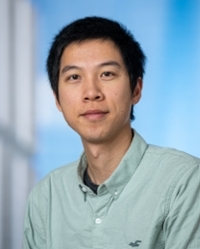Dutch Physicist Ge's measurements pave the way to finding Majoranas
.jpeg)
Fifteen years ago, an alternative technique to look for the elusive Majorana particles was conceived theoretically. But no one experimented, until now. Physicist Jianfeng Ge and his colleagues from the Allan lab of the Leiden Institute of Physics in Leiden, Netherlands have now successfully carried out the first measurements.
There are a few ways in which physicists can look for Majorana quasiparticles. The main approach is based on conductivity measurements, but that hasn’t provided the definitive results scientists hoped for. Therefore, Ge looked for a new approach. "Back when I was at Harvard, I talked to my colleague Eugene Demler about shot noise measurements that should be able to identify Majorana. He had theorized this fifteen years ago, but no one ever tried it. I thought it was promising so I convinced Milan Allan from the Quantum Matter group to do it. And now we have our first results."
The hunt for exotic Majorana particles
Majoranas are hypothetical particles that are their antiparticles. This makes them different from any of the particles we already know, and finding them could lead to discoveries in physics. Ge is looking for Majorana quasiparticles in quantum matter. This is a collection of electrons that behaves similarly to a Majorana particle. One of the reasons scientists want to find Majoranas is their potential to revolutionize quantum supercomputing. The qubits that are currently used in quantum computers are not very stable and prone to errors. Majorana qubits could be the long-sought cornerstone for fault-tolerant quantum supercomputers.
Paving the way for ultimate proof of Majoranas
The Majorana particles are expected to live in the vortices of an iron-based superconductor that Ge studies. "These vortices are only a few nanometers in size. Only in recent years, technology has advanced to the point where we can measure at this small scale," he explains. "We are the first ones in the world to do this experiment. I find that very exciting.’ The results are very promising at this stage. "We nailed down the origin of the quasiparticles within two possible explanations, one of which is Majorana. These measurements pave the way for ultimate proof of Majoranas. We learned a lot and know how to improve the setup for future measurements." 
"I share the enthusiasm about the potential for quantum computing but it is not what excites me most about this research," Ge says. "What drives me is curiosity. I want to understand the fundamental principles of the physics itself. It will be a long journey to find the ultimate proof for Majorana particles, let alone develop applications like a quantum computer. But with this experiment, we know what to do next. It will not be easy and take a lot of technical instrument development, but I am proud that we are one step closer to finding Majoranas."

 How to resolve AdBlock issue?
How to resolve AdBlock issue?